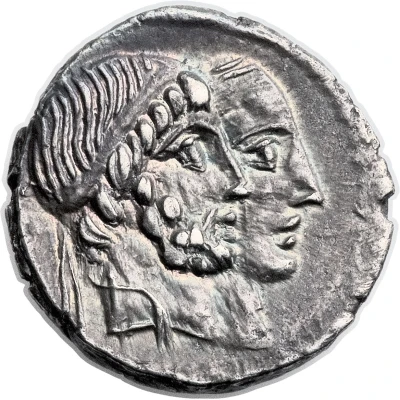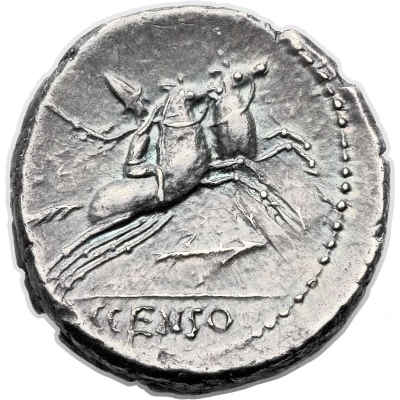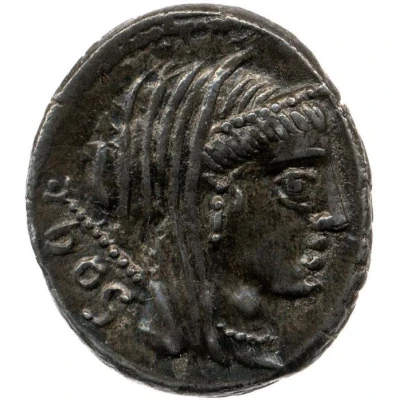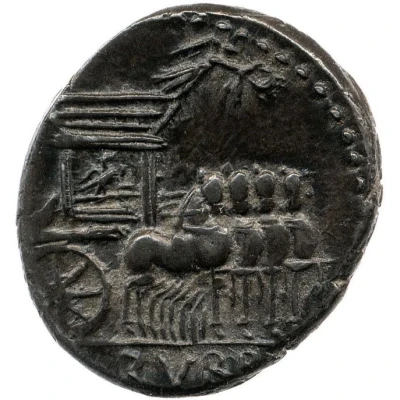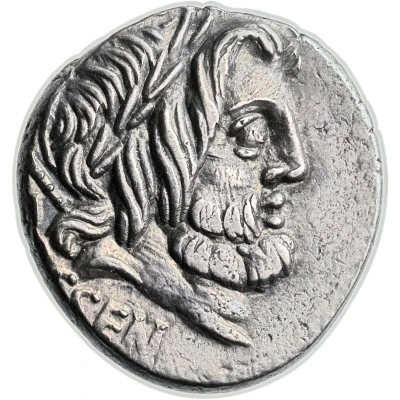
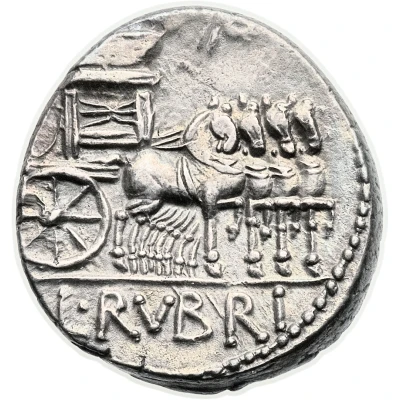

© Heritage Auctions
Denarius Rubria: Lucius Rubrius Dossenus; DOSSEN / L•RVBRI 87 BC
87 BC year| Silver | 3.92 g | 16 mm |
| Issuer | Rome › Roman Republic (509 BC - 27 BC) |
|---|---|
| Period | Republic (509 BC - 27 BC) |
| Type | Standard circulation coin |
| Year | 87 BC |
| Value | Denarius (1) |
| Currency | Denarius of 16 Asses (141 – 27 BC) |
| Composition | Silver |
| Weight | 3.92 g |
| Diameter | 16 mm |
| Shape | Round (irregular) |
| Technique | Hammered |
| Orientation | Variable alignment ↺ |
| Demonetized | Yes |
| Updated | 2024-10-06 |
| Numista | N#66753 |
|---|---|
| Rarity index | 90% |
Reverse
Empty triumphal quadriga marching right, with thunderbolt on side-panel; above, Victory flying right with wreath.
Part of moneyer mark in exergue.
Script: Latin
Lettering: L•RVBRI
Translation: Lucius Rubrius
Comment
The gens Rubria was a pleabian family whose plebeian rank is inferred from Rubrius, a tribune of the people, having carried a law named after him, the lex Rubria.Interesting fact
The Denarius coin was used as a standard currency in ancient Rome and was equivalent to 10 bronze asses or 4 sestertii. It was made of silver and weighed around 3.92 grams, as . The coin was introduced during the Roman Republic era and was used until the Roman Empire era. The Denarius coin was an important symbol of Roman currency and was used for trade and commerce throughout the Roman Empire. It's interesting to note that the coin's design and value changed over time, reflecting the political and economic changes in ancient Rome.
